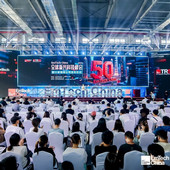
September 2025
The summit gathered dozens of the world's leading scientists, innovators, and industry leaders to explore the future of technology and global collaboration.
from
PR Newswire

July 2025
A skin patch, which measures alcohol and water released from the body, could tell users how much water to drink to avoid dehydration
from
The Times

July 2025
From tattoo-like biosensors to open heart surgery, the work of materials scientists like Professor John Rogers are shaping the face of bioelectronics. Speaking at the College of Engineering’s Dean’s Distinguished Speakers Series, Rogers detailed the awe-inspiring progress of the industry and a glimpse of what’s next.
from
NTU Singapore News

June 2025
Health Tech for the Greater Good Is Focus of First Jefferson Engineering Lecture
from
University of Virginia Engineering News

June 2025
A team of Northwestern investigators have developed a wearable and wireless sleep monitoring device that provides an in-depth analysis of different sleep stages and may improve the detection of sleep disorders, detailed in recent study in the Proceedings of the National Academy of Sciences.
from
Northwestern Medicine News Center

June 2025
A monitoring system to rest on the breast during breastfeeding quantifies the outgoing milk and eliminates some common doubts of the neogens.
from
Evidence Network

June 2025
Northwestern University researchers have developed the first wearable device for measuring gases emitted from and absorbed by the skin. By analyzing these gases, the device offers a new way to assess skin health, including monitoring wounds, detecting skin infections, tracking hydration levels, quantifying exposure to harmful environmental chemicals, and more.
from
Tech Briefs

June 2025
A new, tiny pacemaker — smaller than a grain of rice — developed at Northwestern University near Chicago could play a sizeable role in the future of medicine, according to the engineers who developed it.
from
Yahoo News

May 2025
In early testing, the device showed promising results.
from
Motherly

May 2025
Honor recognizes ‘a substantial contribution to the improvement of natural knowledge’
from
Northwestern News

May 2025
Over 90 outstanding researchers from across the world have this year been elected to the Fellowship of the Royal Society, the UK’s national academy of sciences.
from
News from the Royal Society

May 2025
While many parents extol the virtues of breastfeeding, it can be quite difficult to tell how much milk a breastfeeding infant is consuming. An experimental new wearable device addresses that problem, using an electrical current to gauge milk intake in real time.
from
New Atlas

May 2025
Rice engineer Raudel Avila collaborates on research to develop a comfortable device that measures babies’ milk intake in real time
from
Body Shield Rice University News and Media Relations

May 2025
Soft, comfortable wearable device takes the guesswork out of breastfeeding
from
Northwestern Now

May 2025
From sun damage and pollution to cuts and infections, our skin protects us from a lot. But it isn't impenetrable.
from
Mirage News
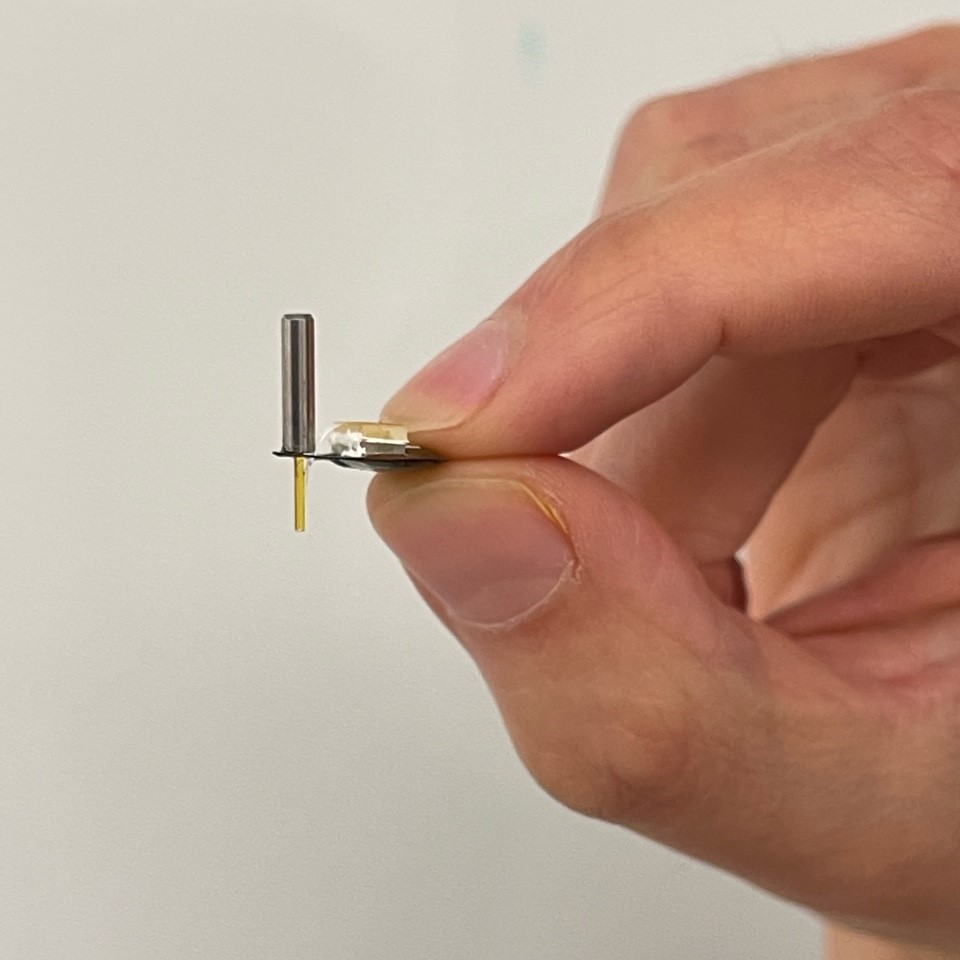
May 2025
Research with the device may help develop new treatments for neurological diseases and mental health disorders.
from
UW Medicine | Newsroom

April 2025
This wearable skin sensor can non-invasively track skin health by analyzing gases absorbed and released.
from
How-To Geek

April 2025
The skin plays a vital role in protecting our body from external elements. A key component of this protective function is the skin barrier, which consists of tightly woven proteins and fats that help retain water while keeping irritants, toxins, microbes, and allergens out.
from
HospiMedica

April 2025
The technology features a small chamber that captures gases without actually making contact with the skin.
from
Medical Device Network

April 2025
Smaller than a grain of rice, new pacemaker is particularly suited to the small, fragile hearts of newborn babies with congenital heart defects. The tiny pacemaker is paired with a small, soft, flexible wearable patch that sits on the patient’s chest. The wearable patch detects irregular heartbeats and automatically emits pulses of light.
from
Today's Medical Developments

April 2025
Northwestern's wearable device senses skin-emitted gases, enabling real-time monitoring of health indicators like hydration and infections.
from
Medical Economics

April 2025
Beneath the surface of your skin, a constant exchange of molecules reveals crucial information about your health. Northwestern University researchers have created a wearable sensor that, unlike any previous technology, doesn’t need to touch your skin to capture this hidden data.
from
StudyFinds

April 2025
A non-contact wearable device measures the skin’s ‘microclimate’ for continuous, real-time monitoring of wounds and wound healing.
from
Nature

April 2025
In a remarkable medical breakthrough, engineers have developed a light-activated pacemaker so tiny that doctors can inject it into the body through a syringe. Remarkably, the device simply dissolves after it’s no longer needed.
from
Earth.com

April 2025
First wearable device to gauge health by sensing gases coming from, going into skin
from
Northwestern Now

April 2025
The device moves beyond simple vibrations to produce a refined and diverse range of haptic sensations.
from
SciTechDaily
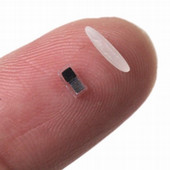
April 2025
A self-powered, bioresorbable temporary pacemaker the size of a grain of rice has been developed by an international team of researchers. The device, which could potentially prevent lethal complications of heart surgery, could be especially valuable in young children.
from
Chemistry World

April 2025
Scientists announced the development of the world’s tiniest pacemaker – a temporary heartbeat regulator that’s wireless and smaller than a grain of rice.
from
Tomorrow's World Today

April 2025
The new device is smaller than a grain of rice and gets absorbed by the patient’s body when it’s no longer needed, eliminating the risks of an extraction surgery
from
Smithsonian Magazine

April 2025
Engineers at Illinois' Northwestern University have developed the tiniest pacemaker you'll ever see. It's several times smaller than a regular pacemaker, and it's designed for patients several times smaller than the average pacemaker user.
from
News Atlas

April 2025
A new, tiny pacemaker — smaller than a grain of rice — developed at Northwestern University could play a sizable role in the future of medicine, according to the engineers who developed it.
from
Chicago Tribune

April 2025
The world’s tiniest pacemaker — smaller than a grain of rice — could help save babies born with heart defects, say scientists.
The miniature device can be inserted with a syringe and dissolves after it’s no longer needed.
from
New York Post

April 2025
Scientists said Wednesday they have developed the world's tiniest pacemaker, a temporary heartbeat regulator smaller than a grain of rice that can be injected and controlled by light before dissolving.
from
ScienceAlert

April 2025
Scientists at Northwestern University unveiled the world's smallest pacemaker.
from
CBS News Chicago

April 2025
Tiny device can be inserted with a syringe, then dissolves after it’s no longer needed
from
Northwestern University Feinberg School of Medicine News

April 2025
Engineers have created a new wearable technology which mimics a range of complex sensations.
from
BBC Newsround

March 2025
How can haptic feedback, which uses vibrations to simulate real touch sensations, be improved to provide more accurate data to users? This is what a recent study published in Science hopes to address as a team of more than a dozen researchers developed a novel technology for enhancing haptic feedback that produces complex sensations that were previously unattainable.
from
Labroots

March 2025
New tech out of the wearables lab of Northwestern University inventor John Rogers can go beyond the simple buzz of a typical haptic sensor to mimic complex sensations on the skin.
from
Crain's Chicago Business

March 2025
Device goes beyond the buzz to create a sophisticated variety of haptic sensations
from
Northwestern Now

February 2025
The Hagler Institute for Advanced Study is proud to announce the John Rogers/Yonggang Huang Medal. This is an annual award for the best collaborative research paper by a Hagler Fellow with a Texas A&M student among the co-authors.
from
Hagler Institute for Advanced Study
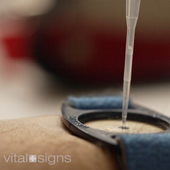
January 2025
Researchers have discovered biomarkers in sweat that could play a role advancing everything from precision medicine and nutrition to diagnosing things like depression and anxiety.
from
CNN Vital Signs

November 2024
Scientists develop wearable haptic device to offer a sense of touch for visually impaired
from
Meteored

November 2024
A new way to experience human sense of touch has arrived.
from
Wired Middle East

November 2024
Scientists have devised a clever new method of allowing people to feel sensations that are transmitted to their skin. Beyond its applications in fields such as gaming and telepresence, the technology could also be used to guide the blind.
from
New Atlas

November 2024
Device delivers various sensations, including vibrations, pressure and twisting
from
Northwestern Now
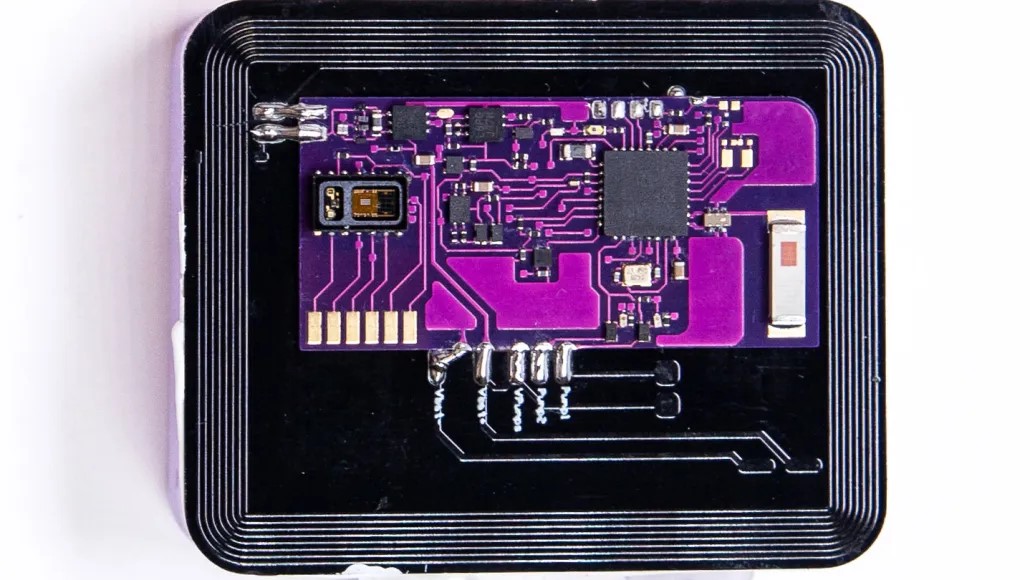
November 2024
An implantable device detected opioid overdose and automatically administered naloxone, saving lives in rat and pig models.
The device hasn’t yet been tested in people. If successful, it might also be adapted to treat other emergencies, such as life-threatening allergic reactions.
from
National Institutes of Health

November 2024
Spurred by advances in energy-harvesting materials, a new generation of advanced implantable biomedical devices is emerging that does away with the bulky battery.
from
Chemistry World
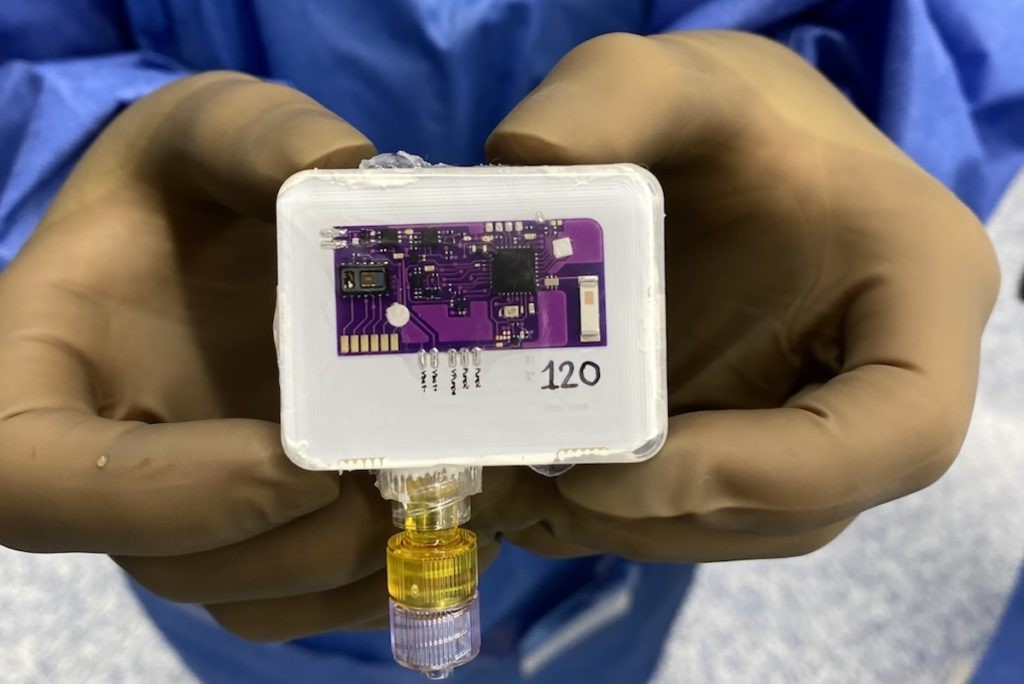
November 2024
A team of scientists led by Northwestern Medicine investigators has created an implant capable of reversing an opioid overdose, according to findings published in Science Advances.
from
Northwestern University Feinberg School of Medicine News

November 2024
Interdisciplinary engineering team developed a wearable fatigue-prediction sensor system.
from
Northwestern University

October 2024
With continued development, the device has the potential to someday save human lives.
from
ScienceNews

October 2024
Researchers from WashU Medicine and Northwestern University developed an implantable device that can detect an overdose and rapidly deliver naloxone.
from
Medical Xpress

July 2024
Prof. Rogers delivers a plenary talk titled "From Scientific Discovery to Engineering Development and Commercial Deployment" at the iCANX event in Davos, Switzerland.
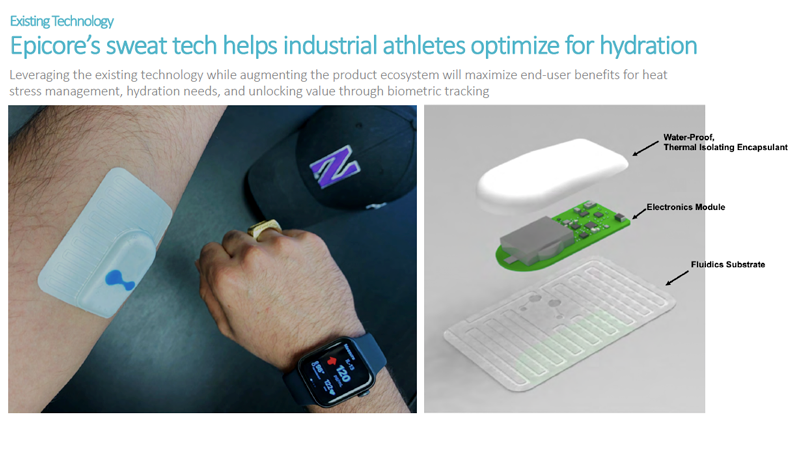
June 2024
Consulting for Wearable Technologies - A Catalyst for Innovation, a piece that highlights our course in the Farley Center for Entrepreneurship and Innovation at Northwestern University.
from
Northwestern University

March 2024
Advances in Maternity Technology, features our work in this area!
from
IEEE Pulse

March 2024
Shape-Shifting Ultrasound Stickers Detect Post-surgical Complications, as reported in a paper in Science.
from
Northwestern University

March 2024
S. Sharma and Y. Lee write a perspectives piece titled Monitoring Homeostasis With Ultrasound, on our paper on this topic, published in Science.
from
Science

February 2024
Fenella Saunders writes a piece featuring Q&A with Prof. Rogers on research in bioelectronics, titled Wearable Wireless Electronics.
from
American Scientist

February 2024
Prof. Rogers is awarded the 2024 IEEE Biomedical Engineering Award.

December 2023
A new project at Northwestern University aims to manage the stress we put our vocal cords through, using a device to monitor how hard our voices are working in order to prevent vocal cord injuries.
from
CBS Evening News

November 2023
Softly adhered to the skin, the novel devices developed by a team with Professor John Rogers continuously track subtle bodily sounds simultaneously and wirelessly at multiple locations across the body.
from
Northwestern Now

November 2023
Our work in bioelectronics for kidney transplants highlighted in Nature Reviews Nephrology, December 2023 edition.
from
Nature Reviews Nephrology

October 2023
Our work in bioelectronics for kidney transplants was highlighted in Nature Electronics!
from
Nature Electronics

October 2023
Transient electronics featured as a cover article in C&ENews -- Made to Degrade!
from
C&ENews

September 2023
Microrobots featured as the worlds smallest remote controlled walking robot in the 2023 issue of Ripley's Believe It or Not.
from
Ripley's Believe It or Not!

September 2023
M. Zaidan and F.G. Lakkis write a perspectives piece in Science on our paper on bioelectronic monitoring of kidney health, titled Tracking Kidney Transplant Fitness.
from
Science

September 2023
First device to monitor transplanted organs detects early signs of rejection, as reported in a paper in Science.
from
Northwestern Now

March 2023
NU researchers seek to increase accessibility of motorized wheelchair
from
The Daily Northwestern
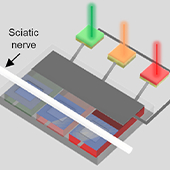
March 2023
Shirley Ryan AbilityLab and Northwestern University Invent Self-Powered Drug Delivery System, as reported in a paper in Proceedings of the National Academy of Sciences.
from
Shirley Ryan AbilityLab

February 2023
First transient electronic bandage speeds healing by 30%, as reported in a paper in Science Advances.
from
Northwestern Now

February 2023
First wearable device for vocal fatigue senses when your voice needs a break, as reported in a paper in the Proceedings of the National Academy of Sciences
from
Northwestern Now
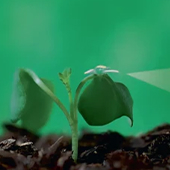
February 2023
News piece on our research on colorimetric microfliers for environmental monitoring, titled - Colorimetric fliers for remote sensing.
from
Nature Electronics

December 2022
Summary piece on research in the Rogers Group, featured in the Northwestern Medicine magazine, titled - Next-Level Wearable Tech.
from
Northwestern Medicine Magazine

October 2022
Northwestern University Trustee Kimberly K. Querrey (’22, ’23 P) and the Louis Simpson Trust have made a new $121 million gift to Northwestern to advance biomedical discovery at the Feinberg School of Medicine, reinforce the University’s position as a global research powerhouse and expand executive education at the Kellogg School of Management. $11 million of the new gift will support QSIB.
from
Northwestern Now

September 2022
Jun Chen, et al writes a perspectives piece titled - A soft haptic interface for programmable patterns of touch - on our large-area, epidermal haptic systems published in Nature Electronics.
from
Matter

August 2022
Editorial piece titled - Making Electronics That Dont Last - on our bio/ecoresorbable MEMS systems published in Nature Electronics.
from
Nature Electronics

July 2022
Shan Jiang and Guosong Hong write a perspectives piece titled - Cooling the pain - on our bioresorbable microfluidic implantable system for targeted block of pain signals in peripheral nerves published in Science.
from
Science

June 2022
New device could provide an alternative to opioids and other highly addictive drugs
from
Northwestern Now

May 2022
Wolfram-Hubertus Zimmermann writes a perspectives piece titled - Remote control of the heart and beyond - on our transient, closed-loop system for electrotherapy published in Science
from
Science

May 2022
New, smart transient pacemaker that is integrated into a coordinated network of soft, flexible, wireless, wearable sensors and control units placed around the upper body.
from
Northwestern Now

May 2022
Just a half-millimeter wide, the tiny crabs can bend, twist, crawl, walk, turn and even jump.
from
Northwestern Now

January 2022
The prize honors outstanding contributions made by researchers who are able to adopt or adapt information or techniques from outside their fields, and thus integrate knowledge from two or more disciplines (e.g., engineering, mathematics, physics, chemistry, biology, biomedicine, geosciences, astronomy, or computational sciences) to solve a major contemporary challenge not addressable from a single disciplinary perspective.
from
National Academy of Sciences

January 2022
Northwestern Engineering’s John Rogers has received the prestigious 2022 Washington Award from the Western Society of Engineers and the Washington Award Commission. The award is conferred annually upon an engineer whose professional attainments have pre-eminently promoted the happiness, comfort, and well-being of humanity.
from
Northwestern Engineering

December 2021
Several skin-interfaced wearable technologies from the group featured in an exhibit titled Design and Healing: Creative Responses to Epidemics at the Cooper Hewitt, Smithsonian Design Museum in New York City, open to the public through February 2023.
from
Cooper Hewitt, Smithsonian Design Museum

December 2021
John Rogers was selected as one of America's 50 Greatest Disruptive Innovators
from
Newsweek Magazine

November 2021
Tsuyoshi Sekitani writes a News and Views piece titled - A photocurable bioelectronics tissue interface - on our hydrogel materials for bioelectronics published in Nature Materials.
from
Nature Materials

November 2021
Y. Khan and Z. Bao write a Commentary piece titled - A soft-electronic sensor network tracks neuromotor development in infants - on our collaborative project published in Proceedings of the National Academy of Sciences
from
Proceedings of the National Academy of Sciences

September 2021
Northwestern University professor John A. Rogers received the 2021 Order of Lincoln, the State of Illinois’ highest honor for professional achievement and public service.
from
Northwestern Now

September 2021
E. Farrell Helbling writes a News and Views piece titled - Seed-inspired vehicles take flight - on our electronic microfliers published in Nature
from
Nature

September 2021
The size of a grain of sand, dispersed microfliers could monitor air pollution, airborne disease and environmental contamination
from
Northwestern Now

August 2021
Millions of Americans spend weeks recovering from heart surgery and other operations to repair brain and bone injuries every year. As special correspondent Fred de Sam Lazaro reports from Chicago, researchers are working on a novel approach to aid in that recovery. The story is part of our “Breakthrough” series.
from
PBS NewsHour
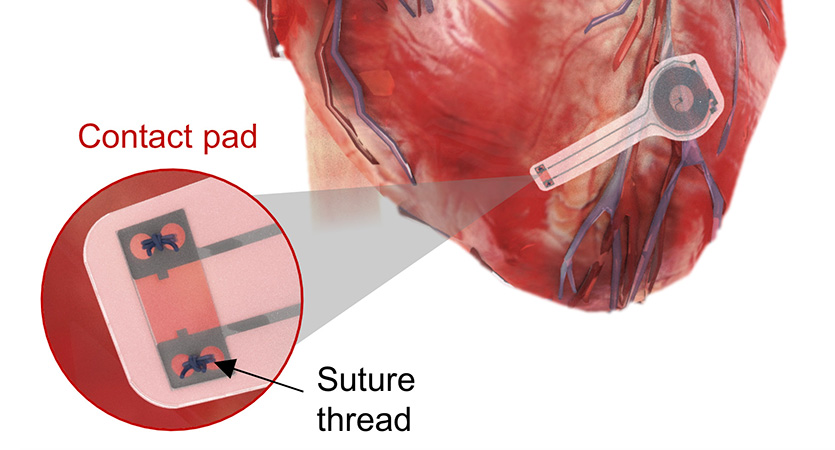
June 2021
Researchers at Northwestern and George Washington universities (GW) have developed the first-ever transient pacemaker — a wireless, battery-free, fully implantable pacing device that disappears after it’s no longer needed.
from
Northwestern Engineering

May 2021
Soft, comfortable sensors are first to comprehensively monitor pregnant women and their babies without wires
from
Northwestern Now

May 2021
Northwestern University researchers are building social bonds with beams of light. For the first time ever, Northwestern engineers and neurobiologists have wirelessly programmed — and then deprogrammed — mice to socially interact with one another in real time. The advancement is thanks to a first-of-its-kind ultraminiature, wireless, battery-free and fully implantable device that uses light to activate neurons.
from
Northwestern Now

April 2021
Haptics research aims to add touch to virtual reality, online shopping, and artificial limbs
from
Science News

April 2021
Northwestern University faculty members Mesmin Destin, Vicky Kalogera, Jennifer Lackey and John A. Rogers are among the 2021 Guggenheim Fellows recently named by the John Simon Guggenheim Memorial Foundation.
from
Northwestern Now

March 2021
A Northwestern University-led research team has developed a novel skin-mounted sticker that absorbs sweat and then changes color to provide an accurate, easy-to-read diagnosis of cystic fibrosis within minutes.
from
Northwestern Now

March 2021
Nina Notman takes a snapshot of the burgeoning field of health and fitness monitoring tattoos and patches
from
Chemistry World

March 2021
Flexible circuits inspired by human skin offer options for health monitoring, prosthetics and pressure-sensing robots.
from
Nature

March 2021
A team of scientists, led by researchers at Shirley Ryan AbilityLab, Northwestern University and the University of Illinois at Chicago, has developed novel technology promising to increase understanding of how brains develop, and offer answers on repairing brains in the wake of neurotrauma and neurodegenerative diseases.
from
Shirley Ryan Ability Lab
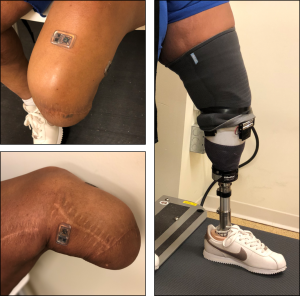
January 2021
A multi-disciplinary team of investigators led by Northwestern scientists have created a wireless, soft and flexible sensor that can constantly monitor pressure and temperature between the patient’s skin and prosthesis.
from
FSM News Center

January 2021
A novel wireless device may improve real-time monitoring of blood flow and oxygenation in the brain for neonatal and pediatric patients, according to a Northwestern Medicine study published in Proceedings of the National Academy of Sciences (PNAS).
from
FSM News Center

December 2020
Sibel Health — a Northwestern spinout commercializing the sensor — has received $2.4 million from the U.S. Department of Defense through a Medical Technology Enterprise Consortium award.
from
Northwestern Now

December 2020
Northwestern University’s Querrey Simpson Institute for Bioelectronics (QSIB) has formed a long-term partnership with Maxim Integrated Products, Inc. to help lead the digital revolution in modern healthcare.
from
Northwestern Now

October 2020
News and Views piece detailing our smart catheters with arrays of sensors and actuators in Nature Biomedical Engineering.
from
Nature Biomedical Engineering

July 2020
Sticker-like medical device streams symptom data to physicians.
from
Northwestern Now

May 2020
Researchers at Northwestern University and Shirley Ryan AbilityLab in Chicago have developed a novel wearable device and are creating a set of data algorithms specifically tailored to catch early signs and symptoms associated with COVID-19 and to monitor patients as the illness progresses.
from
Northwestern Now

April 2020
In a recent publication in the journal Science Translational Medicine, Northwestern University researchers demonstrate next-generation flexible brain implants with more than a thousand electrodes can survive for more than six years.
from
Pratt School of Engineering, Duke University

March 2020
An interdisciplinary team of Northwestern University researchers has developed a new wireless, battery-charged, affordable monitoring system for newborn babies that can easily be implemented to provide clinical-grade care in nearly any setting.
from
Northwestern Now

February 2020
Gatorade, Epicore Biosystems, and Northwestern University's Gx Sweat Patch TV Commercial, 'Push the Game Forward' Featuring Jayson Tatum
from
iSpot
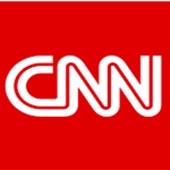
November 2019
In a paper published Wednesday in the journal Nature, Rogers and his team at Northwestern report a new wireless and battery-free smart skin that could shift the course of this technology. Through a fast, programmable array of miniature vibrating disks embedded in a soft, flexible material, this smart skin can contour to the body and deliver sensory input -- what you'd feel when using it -- that Rogers says is quite natural.
from
CNN

November 2019
Northwestern University researchers have developed a new thin, wireless system that adds a sense of touch to any virtual reality (VR) experience. Not only does this platform potentially add new dimensions to our long-distance relationships and entertainment, the technology also provides prosthetics with sensory feedback and imparts telemedicine with a human touch.
from
Northwestern Now

November 2019
New Querrey Simpson Institute for Bioelectronics will expand the development of body-integrated electronic systems and enhance research collaborations
from
Northwestern Engineering

October 2019
Four Feinberg faculty members have been honored with the election to the National Academy of Medicine (NAM).
from
Northwestern Medicine

October 2019
Project receives NIH grant worth up to $10 million over next five years.
from
Northwestern Now

May 2019
Sweating the Details: Prof. John Rogers with Chrissy Farr at CNBC Healthy Returns Conference.
from
CNBC
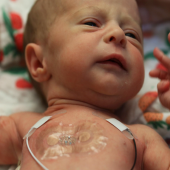
March 2019
Tiny wireless skin sensors are being tested to monitor stroke recovery and breathing disorders, but they could also help babies who are born prematurely, according to a new study in the journal Science.
from
CBS News

February 2019
Premature babies are often covered in wires. A Northwestern scientist's new invention could change that as detailed in new study published in the journal Science.
from
Chicago Tribune

January 2019
Elite athletes must listen carefully to their bodies during workouts and competition. Their muscles. Heart rate. And, sometime soon, maybe even their sweat. Northwestern scientists have created a soft, bandage-like device that collects and analyzes an athlete’s perspiration as they run, bike and even swim underwater.
from
Los Angeles Times

January 2019
A new device — wearable, wireless and battery free — improves the ability to monitor and diagnose health problems by analyzing the sweat on your skin.
from
New York Times

January 2019
Winner of CES 2019 Innovation Award, the My Skin Track pH will enable L'Oréal, Epicore Biosystems, and Northwestern University to develop a new wearable microfluidics product and conduct new clinical studies.
from
Cision
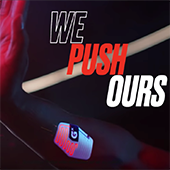
December 2018
Wearable technology developed by John Rogers' Lab at Northwestern University and Epicore Biosystems was front and center recently in a new Gatorade commercial featuring tennis superstar Serena Williams.
from
Chicago Inno

December 2018
The tennis legend talks about our sweat patch technology, why she’s pitching Gatorade, and what makes a successful brand partnership in new Fast Company article.
from
Fast Company

December 2018
Wire-free devices that dissolve could expand the use of electric pulses in medicine.
from
Science

December 2018
A wireless, low-power optoelectronic platform, which is based on micro-LEDs, can provide multimodal programmable control over optogenetic stimulation parameters.
from
Nature Electronics
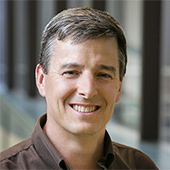
December 2018
Northwestern Engineering's John A. Rogers has received the 2019 Benjamin Franklin Medal in Materials Engineering from The Franklin Institute, one of the oldest centers for science education and development in the country.
from
Northwestern Engineering
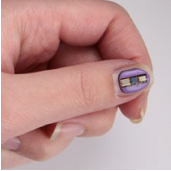
December 2018
Smaller than an M&M and thinner than a credit card, device can optimize treatment of neonatal jaundice, skin diseases, seasonal affective disorder and reduce risk of sunburns and skin cancer.
from
Northwestern Now

November 2018
In 2011, materials scientist John Rogers, now at Northwestern University in Evanston, Illinois, made what he called epidermal electronics: thin sheets of circuits, the mechanical properties of which were engineered to match those of human skin. Using a suite of mechanical and materials-engineering techniques, Rogers made rigid silicon — the electronic industry’s material of choice — compatible with flexible and stretchable surfaces.
from
Nature

November 2018
The future wearable skincare technology is roughly the size of an M&M. Launching today, L'Oréal’s La Roche-Posay My Skin Track UV sensor clips onto clothing and measures the wearer’s exposure to UV radiation, a form of radiation that is known to damage skin and, in large amounts, cause skin cancer.
from
Wired
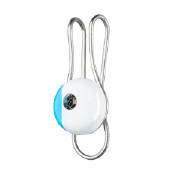
November 2018
The brainchild of L’Oréal and Northwestern Engineers, the new My Skin Track/UV device, which just launched at select Apple stores and on apple.com, is the world’s first battery-free wearable electronic device to measure UV exposure.
from
Vogue

November 2018
A new wireless, Band-Aid-like sensor developed at Northwestern University could revolutionize the way patients manage hydrocephalus and potentially save the U.S. health care system millions of dollars.
from
Northwestern Now

October 2018
Researchers at Northwestern University and Washington University School of Medicine in St. Louis have developed the first example of a bioresorbable electronic medicine: an implantable, biodegradable wireless device that speeds nerve regeneration and improves the healing of a damaged nerve.
from
Northwestern Now

August 2018
John A. Rogers, PhD, has created a fleet of wireless, wearable devices that have the potential to change the way physicians collect data and treat patients, from NICU preemies to stroke patients in recovery.
from
Northwestern Medicine

April 2018
Press release from NIH that highlights our work on wireless, implantable LED systems for optogenetics control of bladder pain, originally published in the journal Pain.
from
National Institute of Biomedical Imaging and Bioengineering
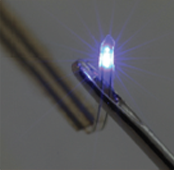
April 2018
Coffey writes a cover feature article in Optics and Photonics News that highlights our work on wireless, implantable LED systems for optogenetics, originally published in Neuron and commercially avaialble from Neurolux, Inc.
from
Optics & Photonics

March 2018
Song and Greenleaf write a News and Views piece in Nature Biomedical Engineering that highlights our work on millimeter-scale, piezoelectric modulus sensors capable of integration with biopsy needles for in situ, soft tissue characterization, originally published in Nature Biomedical Engineering
from
Nature Biomedical Engineering

March 2018
Northwestern University and Gatorade are developing a low-cost wearable skin patch that displays various colors to conveniently let the wearer know when they need to take a drink.
from
Mobi Health News

March 2018
Eric Topol, editor-in-chief of Medscape, and Prof. John Rogers, Northwestern University Professor, sit down to discuss bioelectronics, biosensors and the future of medicine.
from
Medscape

February 2018
Scientists in the US are developing wearable sensors to speed up the recovery of stroke patients.
from
BBC
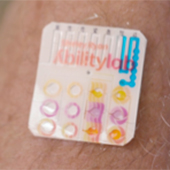
February 2018
A groundbreaking new wearable designed to be worn on the throat could be a game-changer in the field of stroke rehabilitation.
from
Shirley Ryan Ability Lab

February 2018
John Rogers’ microfluidic device heads out of the lab and into widespread distribution with Gatorade, AbilityLab, and the Air Force.
from
Northwestern Engineering

January 2018
Engadget's editors applied their extensive knowledge of the tech industry to scouring the show floor for the very best of the best at CES, choosing a winner in each of the 17 highly competitive categories based on level of innovation, design, market appeal and functionality.
from
GlobeNewswire

January 2018
Our wireless, battery-free, millimeter-scale UV dosimeters featured in a CES best-of-show video and article by USA Today, January, 2018.
from
USA Today

January 2018
Our wireless, battery-free, millimeter-scale UV dosimeters are launched as a joint product with LOreal at the Consumer Electronics Show in Las Vegas, January, 2018.
from
Northwestern Now

October 2017
Northwestern engineer John Rogers has elevated his cutting edge invention, a “Lab on the Skin,” to a rare level of cultural notoriety as part of a new exhibit in New York's Museum of Modern Art (MoMA). In addition to multiple versions of the device itself, the exhibit includes an animated video from Northwestern to illustrate the technology and showcase potential future applications.
from
Northwestern Now

March 2017
Rotenberg and Tian write a News and Views piece in Nature Biomedical Engineering that highlights our work on flexible, capacitively coupled electronics for chronic mapping of electrophysiology (Originally published in Nature Biomedical Engineering, March 2017)
from
Nature Biomedical Engineering

February 2017
A minimally invasive technique that accurately measures living muscle tissue could someday be used to diagnose and treat a wide range of movement disorders.
from
Shirley Ryan Ability Lab

February 2017
Huang's work has led to major advances in stretchable and flexible electronics with biomedical applications.
from
Northwestern Engineering

November 2016
The low-cost wearable electronic device developed by Professor John A. Rogers collects and analyzes sweat for health monitoring.
from
Northwestern Engineering

November 2016
A new form of 3D imaging of muscles has allowed researchers to “see” inside muscle and trace long cables made up of a protein called collagen. Collagen cables are one culprit behind muscular diseases and injuries, so targeting them could provide treatments.
from
Shirley Ryan Ability Lab

October 2016
Work by Mark Hersam, Yonggang Huang, Chad Mirkin, and John Rogers appear in the Novel Materials Special Feature.
from
Northwestern Engineering

October 2016
Zhejiang University (ZJU) is one of China’s top higher education institutions, as well as one of its oldest; its roots can be traced back to 1897 and the founding of the Qiushi Academy.
from
Querrey Simpson Institute for Bioelectronics

September 2016
The Society of Engineering Science bestows the award annually to a researcher with outstanding contributions in theoretical or experimental solid mechanics.
from
Northwestern Engineering

September 2016
Yonggang Huang and Ilya Mikhelson received this year’s teaching award; Alex Birdwell received the award for advising.
from
Northwestern Engineering

July 2016
Although the cause of CP remains a mystery, researchers at the Rehabilitation Institute of Chicago (RIC) are at the forefront of those working to understand, treat — and ultimately cure — this life-long neurological disorder.
from
Shirley Ryan Ability Lab

June 2016
IEEE is an association dedicated to advancing innovation and technological excellence for the benefit of humanity.
from
Querrey Simpson Institute for Bioelectronics
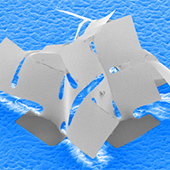
September 2015
A Northwestern University research team has created complex 3-D micro- and nanostructures out of silicon found in advanced technologies using a new assembly method that uses cuts to advantage.
from
Northwestern Engineering

August 2015
Rogers, currently the Swanlund Chair at the University of Illinois Urbana-Champaign, will hold the inaugural Louis Simpson and Kimberly Querrey Professorship.
from
Northwestern Engineering

April 2015
Northwestern scientists have developed a new high-tech but simple ointment applied to the skin that may one day help diabetic patients heal ulcers on their feet.
from
Northwestern Medicine

January 2015
Researchers at Northwestern University and the University of Illinois at Urbana-Champaign have developed a new fabrication technique to create 3-D micro- and nanostructures with many advantages over 3-D printing.
from
Northwestern Engineering



































































































































